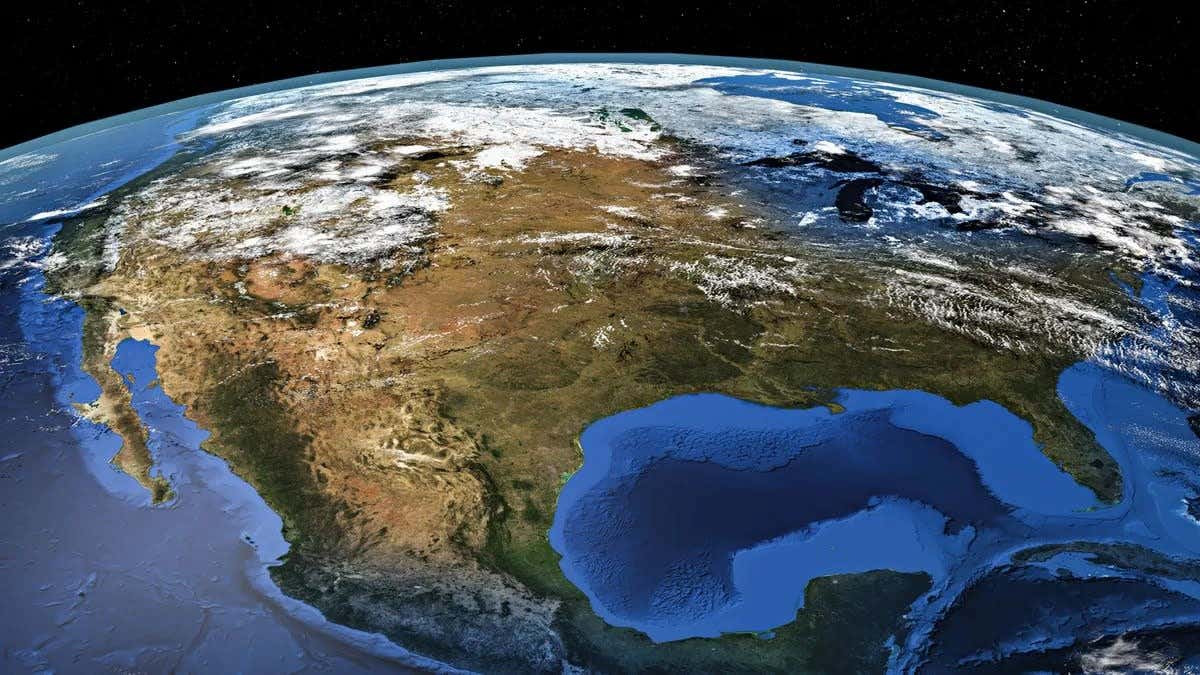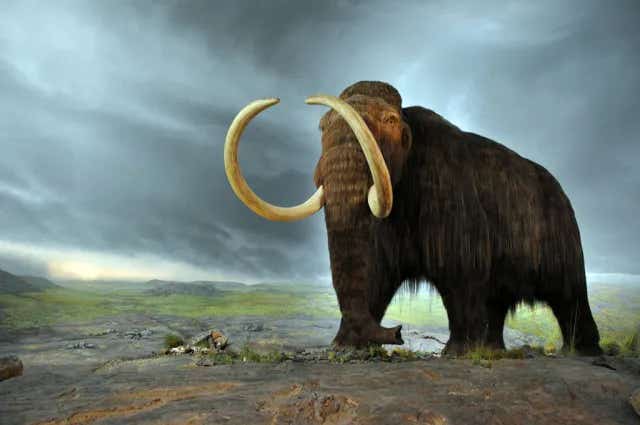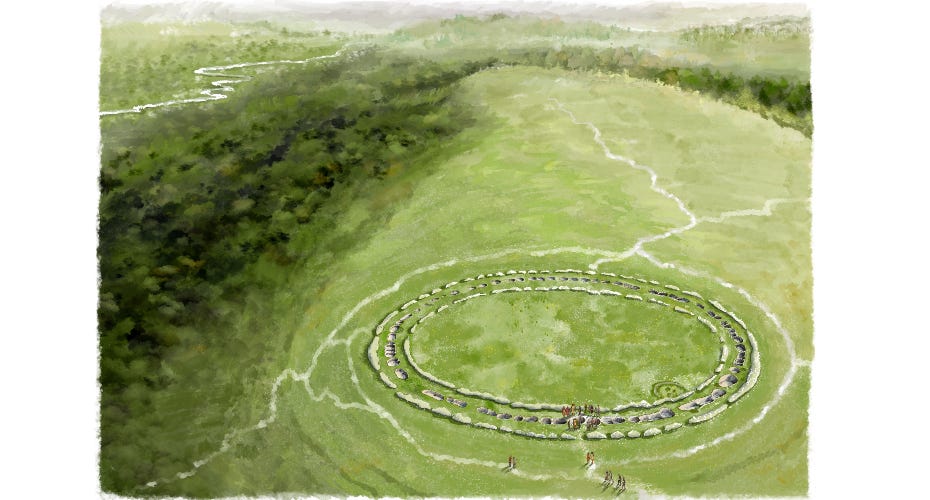Powerful geological changes are happening beneath the United States
New seismic model shows deep crust under North America is thinning due to mantle flow from a lost tectonic plate.

Parts of Earth’s oldest continental crust are sinking into the mantle. (CREDIT: Timothy Hodgkinson via Alamy)
The deep roots of Earth's oldest continents have long been thought to be unshakable. But a new seismic discovery suggests that even these stable landmasses can change. Beneath the center of North America, pieces of the deep continental base appear to be dripping away—slowly pulled into the deeper mantle. For the first time, scientists are seeing this process in real time, offering a rare glimpse into the hidden forces that shape the planet’s surface.
This phenomenon, called cratonic thinning, is taking place beneath parts of the United States, especially the Midwest. It involves sections of ancient rock breaking off and sinking downward in blob-like shapes. These rocks form part of the craton, the deep and old foundation of the continent that has lasted for billions of years. While the idea that cratons can be eroded isn’t new, this is the first time the process has been captured in action.
A Rare View Inside the Earth
The discovery came from a new full-waveform seismic model of North America. This model, called Seismic Adjoint Tomography of North America, or SATONA, uses high-frequency seismic data to create clearer images of Earth’s interior.
Led by Junlin Hua during a postdoctoral fellowship at The University of Texas at Austin, the research team was able to spot long, narrow blobs beneath the craton. These high-velocity features stretched from the bottom of the continental lithosphere down to the mantle transition zone.
“These blobs have a drip-like shape,” Hua explained. “They show up clearly in our model and probably came from the cratonic lithosphere.”
What makes this even more intriguing is the suspected cause of the dripping: a long-lost oceanic tectonic plate called the Farallon Plate. Although it has been subducted—pulled under the North American Plate—over the past 200 million years, parts of it still exist deep in the mantle.
Geodynamic models suggest this sunken plate may be driving the dripping effect from below, even though it now sits around 600 kilometers away from the base of the craton.
Related Stories
When Stability Crumbles
Cratons are some of Earth’s oldest and most stable structures. They formed no later than the Proterozoic era, over 540 million years ago, and some are even older, dating back over 2 billion years.
These regions make up roughly 60% of the continental lithosphere and are known for their thick roots, which can reach more than 200 kilometers deep. Their stability has long been linked to their density and high viscosity, which help them float like a cork in the surrounding mantle.
But past events have shown that even these ancient structures aren’t immune to change. For example, the North China Craton lost much of its deep root during the Mesozoic era. Different theories have tried to explain such losses—ranging from convective removal, where heat causes material to rise and strip away the lithosphere, to slab rollback and chemical erosion by melting. Yet all these examples come from the distant past, making it hard to know which process was really at play.
The new findings in North America change that. The dripping beneath the continent is active now, allowing scientists to study the process as it unfolds. This kind of real-time observation gives geologists an edge in solving one of Earth’s great geological puzzles.
Driven from Below
The team’s computer models offer clues about how the process works. When they included the Farallon Plate in the model, the craton started to drip. When the plate was removed, the dripping stopped. This suggests a strong link between the presence of the plate and the instability at the base of the craton.
Thorsten Becker, a co-author of the study and professor at UT’s Jackson School of Geosciences, noted how important this is for understanding how continents change over time.
“This sort of thing is important if we want to understand how a planet has evolved,” Becker said. “It helps us understand how you make continents, how you break them, and how you recycle them.”
One reason the plate may be causing this thinning is through its influence on mantle flow. The sinking plate can redirect the movement of hot, soft rock in the mantle, causing it to flow beneath the craton and shear its base. It may also release water and other volatiles into the upper mantle, weakening the craton and making it easier for parts to break off and sink.
Even though the blobs are mostly centered in the Midwest, the effects stretch across a much broader area.
“A very broad range is experiencing some thinning,” Hua said, suggesting the Farallon Plate could be affecting much more of the continent than originally thought.
Slow but Steady Change
While the idea of the continent slowly melting from below might sound alarming, there’s no immediate danger. The process is incredibly slow, unfolding over millions of years. It won’t cause sudden changes to the landscape or pose risks to people living above.
Still, these kinds of deep-Earth changes play a huge role in shaping the surface over geological time. They affect how mountains rise, how tectonic plates move, and even how volcanoes form. So for scientists who study the Earth’s long-term evolution, this kind of discovery is a game changer.
“Because of the use of this full-waveform method, we have a better representation of that important zone between the deep mantle and the shallower lithosphere,” said Becker. “It gives us clues on what’s happening with the lithosphere.”
The findings also build on work started decades ago. The Farallon Plate was first imaged seismically in the 1990s by Stephen Grand, another co-author of the study and professor emeritus at UT. His earlier research showed that the plate had subducted deep into the mantle. Now, it appears that remnants of that same plate are reshaping the continent from below.
“You look at a model and say, ‘Is it real? Are we overinterpreting the data, or is it telling us something new about Earth?’” Becker said. “But it does look like in many places that these blobs come and go. It’s a real thing.”
Rethinking Continental Lifespans
The idea that continents are forever has long been part of how geologists view Earth. Cratons, in particular, were thought to be immune to the recycling and reshaping that affects other parts of the planet. But these new observations show that even the oldest parts of Earth can evolve—and even disappear.
This discovery reshapes not just what scientists know about North America, but how they understand the life cycle of continents as a whole. It suggests that external forces, like deep mantle convection driven by a long-lost tectonic plate, can slowly erode even the most stable parts of the planet’s crust.
And with better tools like SATONA and broader seismic data from projects like EarthScope, researchers now have the ability to see more clearly into Earth’s deep interior. That clarity could help uncover more examples of active geological processes that were once hidden from view.
In the words of Hua, “We made the observation that there could be something beneath the craton. Luckily, we also got the new idea about what drives this thinning.”
As plates continue to shift and mantle materials flow, Earth’s oldest regions may keep changing—very slowly, but with big implications for the future of the continents we call home.
Note: The article above provided above by The Brighter Side of News.
Like these kind of feel good stories? Get The Brighter Side of News' newsletter.
Joseph Shavit
Head Science News Writer | Communicating Innovation & Discovery
Based in Los Angeles, Joseph Shavit is an accomplished science journalist, head science news writer and co-founder at The Brighter Side of News, where he translates cutting-edge discoveries into compelling stories for a broad audience. With a strong background spanning science, business, product management, media leadership, and entrepreneurship, Joseph brings a unique perspective to science communication. His expertise allows him to uncover the intersection of technological advancements and market potential, shedding light on how groundbreaking research evolves into transformative products and industries.



